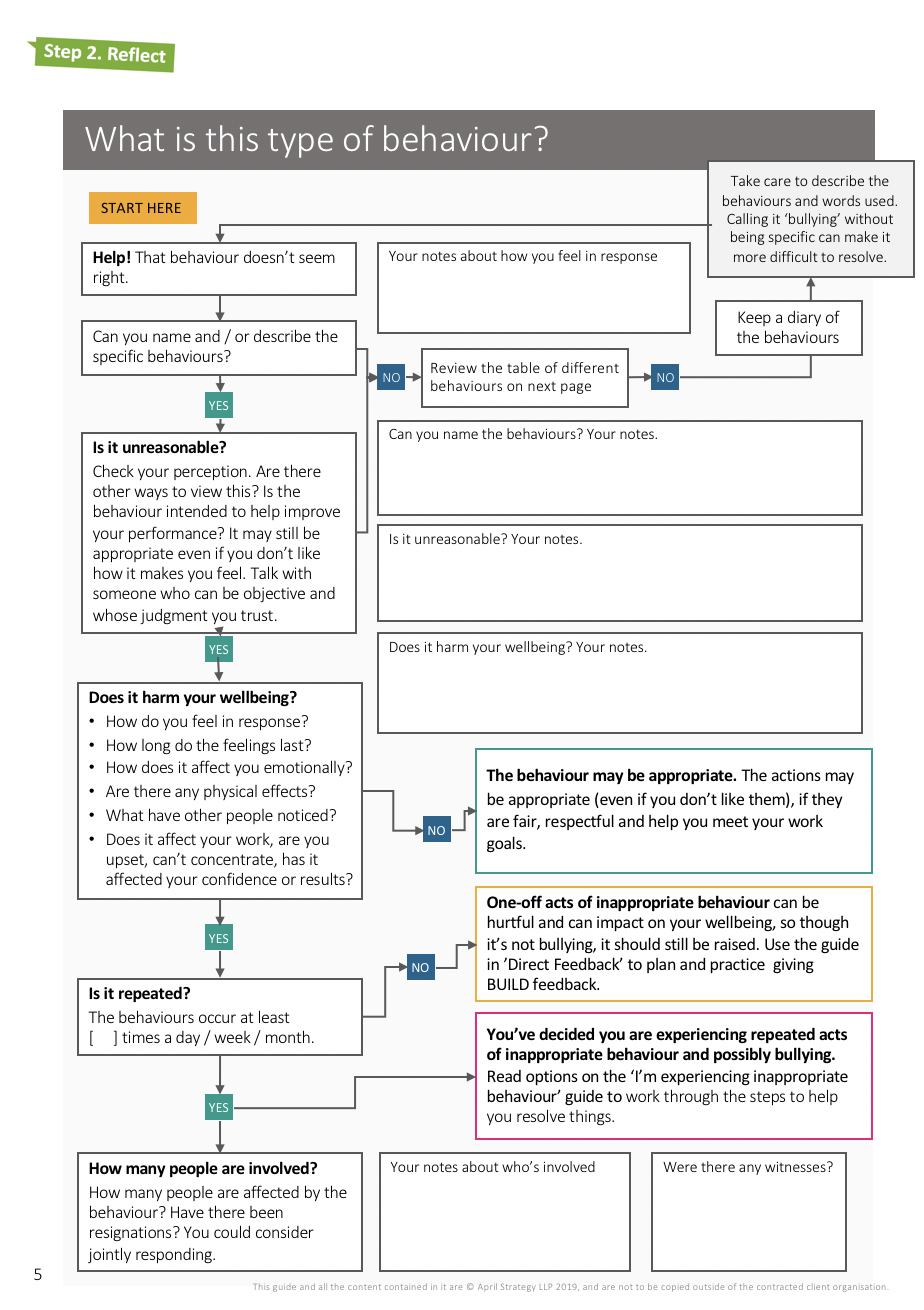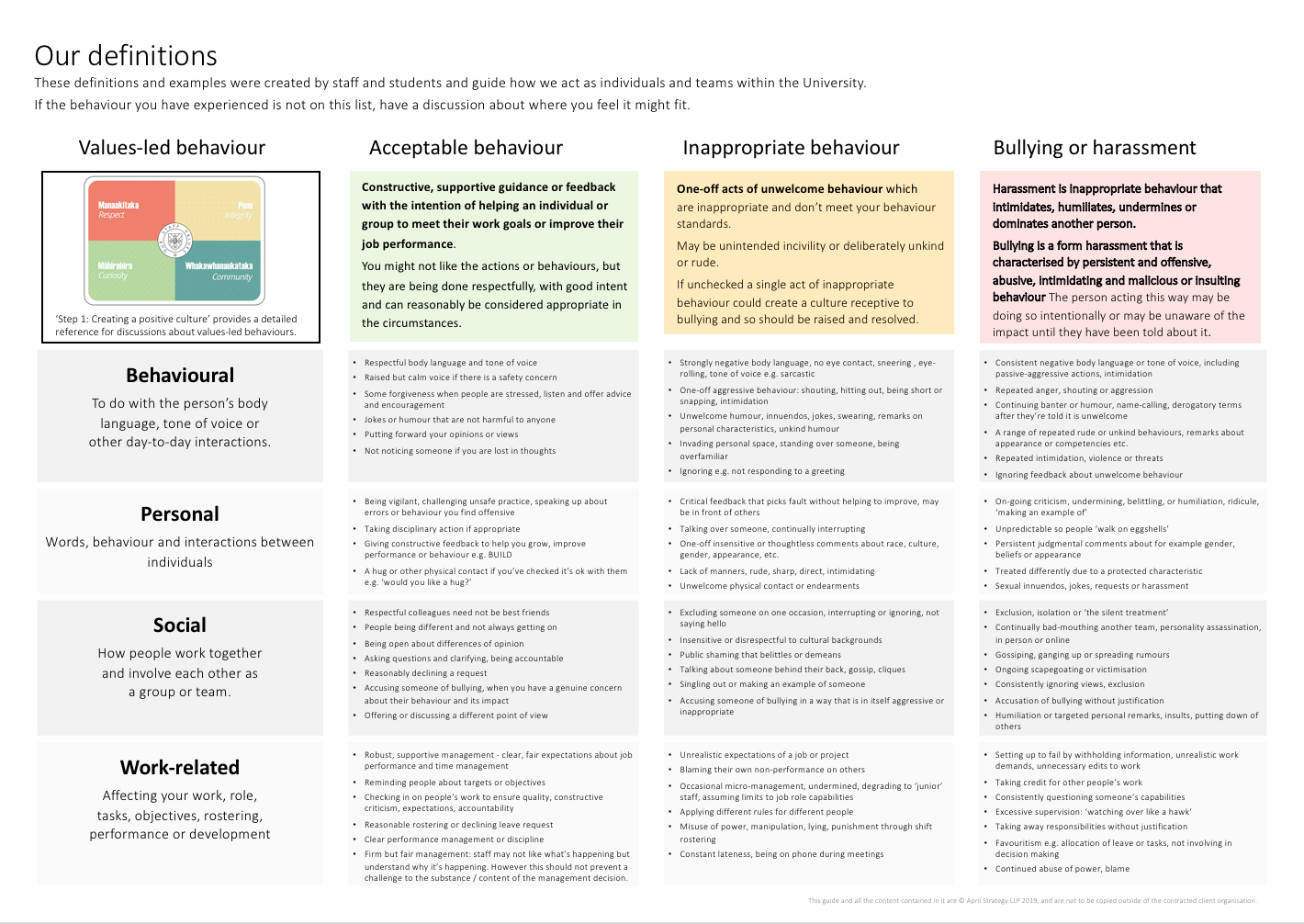What kind of behaviour is it?
This checklist was created to help you work out what kind of behaviour is involved in your situation, and so the best way to start to resolve things.
You can download or view a PDF of a more comprehensive decision tree (flow chart) here.
Start Here.
You have experienced some behaviour at work doesn’t seem right. (This checklist is also helpful if you have witnessed inappropriate behaviour, or had an allegation made against you.)
Can you name and describe the specific behaviours?
Calling it ‘bullying’ without being specific can make it more difficult to resolve. Take care to describe the specific behaviours you experienced, the actions they took and the words they used. You will need to be able to describe the behaviours in detail in order to give feedback or report the issue.
- If you are unsure you may want to keep a Behaviours Diary
- Review our Definitions or ‘Dictionary of Behaviours’
-
Is the behaviour unreasonable?
- Take a moment to check your perception. Are there other ways to view this?
- Is the behaviour intended to help improve your performance? It may still be acceptable even if you don’t like how it makes you feel.
- Talk with someone whose judgment you trust.
- What might a rational, reasonable person outside the situation say about what is happening?
-
Does the behaviour harm your wellbeing?
- Does it affect your work? Has it affected your confidence, concentration or results?
- How do you feel in response?
- How long do the feelings last?
- How does it affect you emotionally?
- Are there any physical effects?
- What have other people noticed?
-
Is it repeated?
- Has the behaviour happened only once? Or if it is it repeated, how often has it happened?
If on reflection the behaviour could be considered as reasonable, then it may be acceptable.
If they are fair, respectful and done to help you meet work goals, then actions may be acceptable, even if you don’t like them. (This should not prevent a challenge to the substance / content of the management decision.)
One-off acts of inappropriate behaviour are not usually considered bullying, unless they cause significant harm. But they can be hurtful and can impact on your wellbeing and patient safety, so should still be raised. Use the 'Direct Feedback' guide to help you or a colleague feel confident to give BUILD feedback. The other person might not realise they have caused offence or harm, and feedback means they can reflect on their behaviour and make some changes.
If the behaviour is unreasonable, it harms your wellbeing and it is repeated, then this could be bullying.
You want it to stop. Sit with a trusted colleague and review your options in the ‘Quick start guide’ or the more detailed guide to ‘Our approach, your options’.
Download or view a PDF of the complete decision tree (flow chart) here.
Download our detailed 'Dictionary of Behaviours'. Use this to reflect on your situation, and to talk it through with a trusted colleague or other advocate.
Next step: reflection coaching
